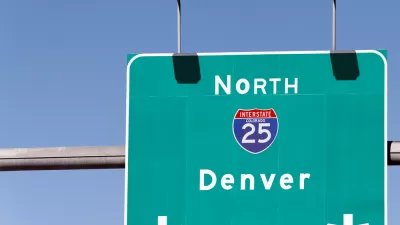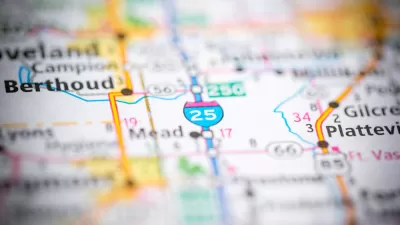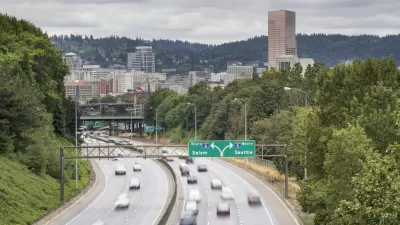The Colorado Department of Transportation’s plan to widen the Interstate 25 freeway through Denver is one of a few plans to widen urban freeways under consideration in the United States.

Plans to widen Interstate 25 through Denver have been shelved by the Colorado Department of Transportation.
Michael Booth reports for the Colorado Sun: “Highway officials have given up on expanding lanes to unclog I-25 through central Denver in coming years, saying there’s no money for it, acknowledging a reality that environmental and neighborhood justice groups had been pushing them to recognize.”
As recently as 2019, the state’s plans to widen the freeway seemed primed for approval, pitched as a solution for the aged highway’s poor safety record, with 1,000 crashes every year on a stretch of the highway between Alameda Avenue and 20th Street.
Signs of trouble for the project first started to appear early in the pandemic, when the state was cutting transportation project funding to address the funding shortfall created by the public health crisis.
According to Booth, the new plan will still make some changes along the route, such as “moving rail lines from next to the highway at Alameda Avenue to 6th Avenue, and [redeveloping] the sprawling former rail repair areas at Burnham Yard to emphasize multimodal transit and reconnecting west and east communities split by the Valley Highway.”
FULL STORY: A lane expansion to unclog I-25 through downtown Denver is not on the table — for now

Trump Administration Could Effectively End Housing Voucher Program
Federal officials are eyeing major cuts to the Section 8 program that helps millions of low-income households pay rent.

Planetizen Federal Action Tracker
A weekly monitor of how Trump’s orders and actions are impacting planners and planning in America.

The 120 Year Old Tiny Home Villages That Sheltered San Francisco’s Earthquake Refugees
More than a century ago, San Francisco mobilized to house thousands of residents displaced by the 1906 earthquake. Could their strategy offer a model for the present?

Alabama School Forestry Initiative Brings Trees to Schoolyards
Trees can improve physical and mental health for students and commnity members.

NYC Outdoor Dining Could Get a Re-Do
The city council is considering making the al fresco dining program year-round to address cost concerns from small businesses.

HSR Reaches Key Settlement in Northern California City
The state’s high-speed rail authority reached an agreement with Millbrae, a key city on the train’s proposed route to San Francisco.
Urban Design for Planners 1: Software Tools
This six-course series explores essential urban design concepts using open source software and equips planners with the tools they need to participate fully in the urban design process.
Planning for Universal Design
Learn the tools for implementing Universal Design in planning regulations.
Ada County Highway District
Clanton & Associates, Inc.
Jessamine County Fiscal Court
Institute for Housing and Urban Development Studies (IHS)
City of Grandview
Harvard GSD Executive Education
Toledo-Lucas County Plan Commissions
Salt Lake City
NYU Wagner Graduate School of Public Service





























